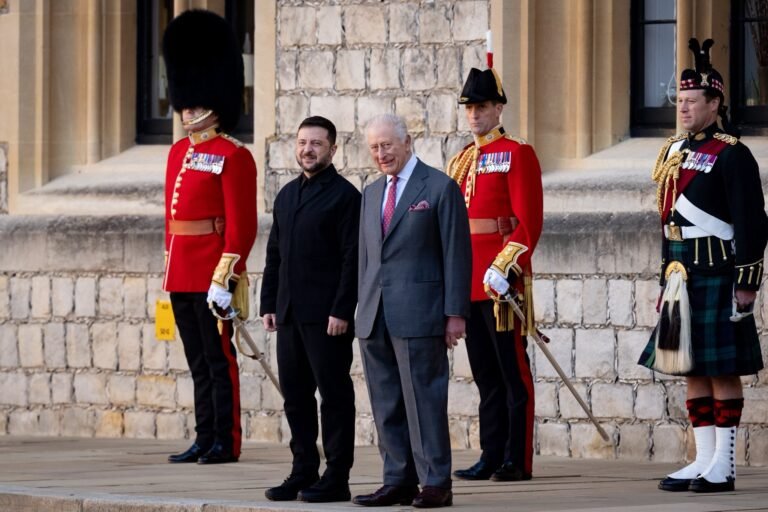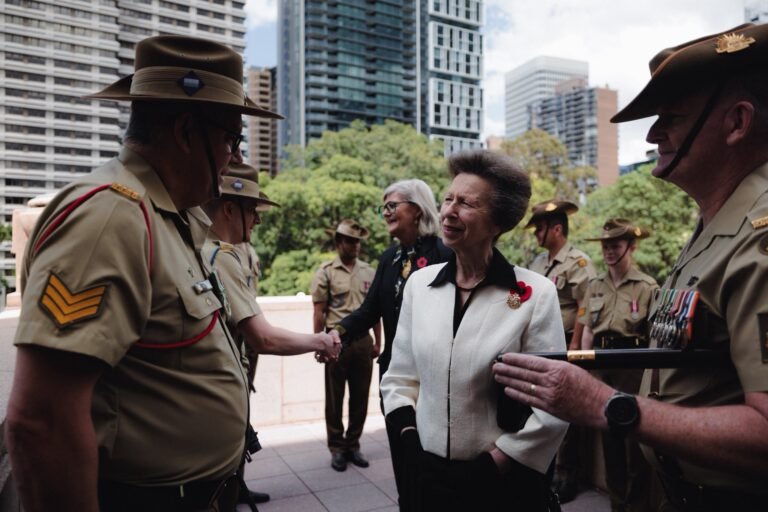Continuing from part I of “The relationship of Elizabeth I & Mary Queen of Scots in letters”
We have already established that Elizabeth’s relationship with her cousin Mary had already taken a sour turn. Beginning around 1570, Elizabeth began to view Mary as a nuisance and the source for Catholic opposition to her reign. Her Privy Counsellors increasingly pressured her to put her imprisoned cousin, Mary, on trial and execute her for her suspected role in encouraging the failed 1571 Ridolfi Plot.
This plot, orchestrated by Florentine nobleman and banker Roberto di Ridolfi, with Spanish King Philip II’s active support, sought to again raise the Catholic North against Elizabeth, assassinate her, and restore Catholicism by putting Mary on the throne. Elizabeth’s cousin, England’s most powerful landowner Thomas Howard, 4th Duke of Norfolk, plotted to marry Mary and rule England alongside her – despite the fact that her husband Bothwell was still alive in a Danish prison, and despite the fact that Norfolk had led Elizabeth’s forces into Scotland in 1560 supporting the Protestant Lairds of the Congregation, to oust Marie de Guise, Mary’s mother. As senior MPs and her councilors continued to push for Mary’s preemptive execution, Elizabeth prevaricated in her usual manner, increasingly referring to her Scottish cousin as “the Daughter of Debate”.

By 1580, Mary and Elizabeth’s relationship deteriorated further. As the years went on, Elizabeth took steps to ensure that Mary’s son James VI was raised as a Protestant by the regents governing Scotland during his minority; Mary bemoaned her lack of control over her own son and heir. When James wrote to Mary “declining to associate her with himself in the sovereignty of Scotland”, offering to treat her merely as a “Queen-Mother”, the devastated Mary wrote a nearly hysterical letter to Elizabeth in which she fumed that “Without him I am, and shall be of right, as long as I live, his Queen and Sovereign…but without me, he is too insignificant to think of soaring.” Refusing James’ offer for her to return to Scotland as a retired dowager Queen, Mary wrote frenziedly to her cousin that “I do not acknowledge one [Queen Mother]; failing our association, there is no King of Scotland, nor any Queen but me.” Again, Mary was utterly out of touch with political reality: while it is true that she had been forced to abdicate against her will, her son was ruling of Scotland with help from regents, and the rest of Europe acknowledged him as a legitimate Monarch.
Writing in early May 1580 to Elizabeth, whom she still addressed courteously as ‘Madam, my good sister’, Mary complained that, while she had written several times during the last year “to lay before your consideration the unworthy and rigorous treatment which I have received in this captivity…”, Elizabeth had not responded to her.
Terrified that Elizabeth was growing distant from her, Mary felt obliged to point out to Elizabeth how her enemies were constantly conspiring to blacken her reputation and name: “I am constrained to beg and entreat you…to relieve yourself from…the continual suspicions, mistrusts, and prejudices with which [my enemies surrounding you] daily trouble you against me…” Mary at this point was once again employing conventional speech toward Elizabeth, though it was, typical of her, wrought with emotion.
By July 1585, Elizabeth’s hold over James VI was so strong that he was addressing her in his letters as ‘madame and mother’; fortunately for Mary’s sake, she seems never to have known that he addressed Elizabeth as if she were his own mother. However, James’ continued close association with Elizabeth seems to have pushed Mary over the edge; word reached Mary of her son’s defensive treaty with Elizabeth the following year, right when Babington asked her blessing for his plot to assassinate Elizabeth and put her on the English throne.
The fourth and final stage of the two Queens’ relationship begins in autumn of 1586. Elizabeth’s agents discovered Mary’s involvement in the Babington Plot to assassinate Elizabeth and place Mary on the English throne. Elizabeth ordered Mary’s transfer to Fotheringhay Castle, where she would ultimately stand trial for treason against her cousin and be executed. It is around this time that Elizabeth seems to have finally determined, after months of delay, that Mary was guilty of conspiring against her. During this time she revealingly refers to Mary in a letter to her jailor as a ‘wicked murderess’, the only evidence that Elizabeth believed Mary to be guilty of Darnley’s 1567 murder—an allegation against Mary which, at the time of the murder, Elizabeth had vehemently denied. Thus, this reference to Mary shows just how much their relationship had changed, to the point that Elizabeth now viewed Mary as her guilty and implacable enemy.

The cousins’ final letters to one another are stark proof of how their relationship had deteriorated over time from a youthful rivalry, to sisterly solidarity immediately following Darnley’s murder, to, ultimately, deadly confrontation in 1586. Convinced of Mary’s involvement in the Babington Plot, Elizabeth’s last letter to Mary was ‘an imperious broadside’. Furious at Mary’s continued dissimulations, and particularly her refusal to acknowledge the right of English noblemen to try her, since she was an anointed Queen, Elizabeth’s letter carried no formal titles or polite address, ‘just a peremptory statement of fact and intent’. She commanded that Mary duly answer Elizabeth’s judges, who represented the full authority of the English Queen:
“You have in various ways and manners attempted to take my life and bring my kingdom to destruction by bloodshed. I have never proceeded so harshly against you. . . It is my will, that you answer the nobles and peers of the Kingdom as if I myself were present. I therefore require, charge, and command you make answer for all I have been well informed of your arrogance.”
Even now, convinced of Mary’s guilt in the Babington Plot to assassinate her, Elizabeth still offered Mary a way out of certain death. She closed her above letter with this admonition, exhorting her sister Queen to admit her guilt in playing a role in the plot, and throw herself upon Elizabeth’s mercy: “Act plainly without reserve, and you will sooner be able to obtain favour of me.” Mary didn’t respond. Some time before her trial, Mary embroidered her Royal cloth of estate with the French motto “En ma fin git mon commencement” (“In my end is my beginning”). By all accounts, she had begun to think seriously of her impending martyrdom.
HISTORIANS RULE MARY INNOCENT OF PLOTTING TO KILL HER HUSBAND LORD DARNLEY
At her trial in mid-October, during which Mary at last had the opportunity to put her great charm to use, she sought to remind Elizabeth, through her commissioners, to remember ‘that the theatre of the whole world is much wider than the Kingdom of England’, reminding Elizabeth that Mary was above all ‘a European Prince and a Catholic Queen’ who ‘could look to her fellow Catholic Princes to avenge her and to future generations to absolve her’ of her earlier misdeeds in ruling Scotland. Mary vehemently denied that the trial had any legitimacy, flaring ‘I am no subject, and would rather die a thousand deaths than acknowledge myself to be one!’. When told that she must answer the charges against her, Mary insisted on her innocence, declaring that ‘I would never make shipwreck of my soul by conspiring the destruction of my dearest sister’.
When several of her servants and secretaries’ confessions to her alleged plotting were read aloud before the court, Mary argued that her letters must have been tampered with after she had first dictated them. She forcefully argued that the confessions were false, and that no Monarch or ruler could be found guilty of a crime based off the altered, tampered-with writings or false testimony of their own servants:
“The majesty and safety of all Princes falleth to the ground if they depend upon the writings and testimony of their secretaries… I am not to be convicted except by mine own word or writing.
She was permitted no attorney to speak in her defense. Citing that the English noblemen present all had a vested interest in seeing her convicted of treason and put to death, the Scottish Queen flatly refused to acknowledge their pretensions of legitimacy to try her, insisting that as a sovereign “Queen by right of birth” they had no authority to judge her in any capacity:
I am an absolute queen, and will do nothing which may prejudice either mine own royal majesty, or other princes of my place and rank, or my son … I am a Queen by right of birth and have been consort of a King of France; my place should be there, under the dais … I am the daughter of James V, King of Scotland, and grand-daughter of Henry VII …To the judgment of mine adversaries, amongst whom I know all defense of mine innocence will be barred flatly, I will not submit myself.
By this time, Mary had become convinced that she would die a martyr’s death at Elizabeth’s hands. As with all treason trials in Tudor England, Mary’s was a foregone conclusion; while she protested her innocence to the last, on 25th October, 1586, she was pronounced guilty of high treason for conspiring to assassinate Elizabeth and sentenced to death. Almost immediately, Parliament pressured Elizabeth to sign Mary’s execution warrant. Elizabeth, in characteristic fashion, demurred and stalled, hoping to find a way to spare herself the horror of signing her cousin’s death warrant. While Elizabeth remained tormented over whether or not to order her execution, Mary seems to have received the trial verdict with serene equanimity.
Mary’s last letter to Elizabeth, written on 19th December, 1586, less than two months before her execution on 8th February, 1587, puts the final touch on the complete reversal of their relationship in the past nineteen years. Convicted of conspiring to assassinate Elizabeth — a charge Mary vehemently denied to her death — she knew that Elizabeth would likely be forced to have her beheaded. Describing her nineteen year imprisonment in religious terms as a ‘long and weary pilgrimage’, Mary’s last letter to her cousin contains a plea for her remains to be conveyed to France after her death, as well as a curious plea that Elizabeth not send an assassin to deny Mary the martyr’s death she longed for:
“Now having been informed… of the sentence passed in the last session of your Parliament, and admonished… to prepare myself for the end of my long and weary pilgrimage, I prayed them to return my thanks to you for such agreeable intelligence, and to ask you to grant some things for the relief of my conscience… I require you, Madam, for the sake of Jesus, that after my enemies have satisfied their black thirst for my innocent blood, you will permit my poor disconsolate servants to remove my corpse, that it may be buried in holy ground, with my ancestors in France, especially the late Queen my mother, since in Scotland the remains of the Kings my predecessors have been outraged, and the churches torn down and profaned.”
Most disturbingly for Elizabeth, Mary’s final letter to her contained an explicit threat that her judicial murder at Elizabeth’s hands would outrage all of Catholic Europe and likely provoke retaliation by the Catholic powers against England:
“Accuse me not of presumption if, leaving this world and preparing myself for a better, I remind you that you will one day to give account of your charge, in like manner as those who preceded you in it, and that my blood and the misery of my country will be remembered…”
Mary’s valedictory words – ‘my blood will be remembered’ – must have seared themselves into Elizabeth’s soul.

When word reached Mary that Elizabeth had at last signed her death warrant, the Queen of Scots responded calmly, thanking God and saying to the English messengers present that
“In the name of God, these tidings are welcome, and I bless and praise Him that the end of all my bitter sufferings is at hand. I did not think that the Queen, my sister, would ever have consented to my death; but, God’s will be done. He is my principal witness, that I shall render up my spirit into His hands innocent of any offence against her, and with a pure heart and conscience clear before His divine majesty of the crimes whereof I am accused. That soul is fair unworthy of the joys of heaven, whose body cannot endure for a moment the stroke of the executioner.”
Even after bringing herself to sign her cousin’s death warrant authorising the execution, Elizabeth still searched desperately for a way to rid herself of responsibility. The Queen suggested that Mary could be quietly murdered by her jailors, including Sir Amyas Paulet, Mary’s strict Puritan jailor.
Paulet informed Mary the night before her death of her impending execution; The Queen received the news calmly, while her servants, devoted to her, collapsed in tears. She spent the last hours of her earthly life in prayer and writing to her allies, especially her former brother-in-law, King Henri III of France. In her final letter, written at 2.00 am with a steady, calm hand in her pristine French, Mary once again declared herself innocent of the charge of conspiring against Elizabeth, claiming to her fellow King that she was about to die as a martyr for their shared Catholic faith. She also reiterated to Henri that she desired to be buried next to her mother in France on consecrated ground, a request neither Elizabeth nor her own son James would ever fulfill:
“Royal brother…I have finally been condemned to death by her and her Estates… I am to be executed like a criminal at eight in the morning… I scorn death and vow that I meet it innocent of any crime…”
At eight o’clock on the morning on Wednesday, 8th February, 1587, Mary, Queen of Scots walked to the scaffold in the Great Hall of Fotheringhay Castle accompanied by her priest, her devoted ladies-in-waiting, and several male assistants. One eyewitness described how The Queen was beautifully and deliberately attired in splendid dress, evoking the image of a Catholic martyr. To her very end, she would play the part of a martyr for her Roman Catholic faith.
Mary wore a lace-edged cap, a black satin gown with purple sleeves, a gold crucifix and carried a bone with a wooden cross for her death.
On approaching the scaffold, Mary turned to her weeping ladies and manservants and said: “Thou hast cause rather to joy than to mourn, for now shalt thou see Mary Stuart’s troubles receive their long-expected end.” She continued, exhorting them to remember that ‘all this world is but vanity and full of troubles and sorrows. Carry this message from me and tell my friends that I died a true woman to my religion, and like a true Scottish woman and a true French woman; but God forgive them that have long desired my end and thirsted for my blood.’
Refusing the offer of the Protestant Dean of Peterborough’s services to pray with her, Mary then had her rosary taken from her, in direct defiance of Elizabeth’s orders that she be allowed all her Catholic devotional items in her last earthly moments. The Queen addressed the Dean, saying: “Trouble not yourself nor me, for know that I am settled in the ancient Catholic religion, and in defence thereof, by God’s grace, I mind to spend my blood.”
The Dean then began praying aloud according to the Anglican Book of Common Prayer, attempting to drown out Mary, who insisted on praying in Latin; she uttered her Catholic prayers in a louder voice, weeping as she did so. Then, she refused the help of the executioner and his assistant to undress her, saying ‘I was not wont to have my clothes plucked off by such grooms, nor did I ever put off my clothes before such a company’. Mary took off her black gown to reveal a bodice and petticoat of scarlet, the traditional colour of Catholic martyrs.
The executioner then knelt, as was custom, and begged her forgiveness for what he had to do. Queen Mary replied softly, “I hope you shall make an end of all my troubles.” She then knelt, laid her head on the block before her and repeated “In manuas tuas, Domine, confide spiritum meum” (“Into Thy hands, O Lord, I commend my spirit”, also Jesus’ last words).
It took three blows of the axe to sever Mary’s head, and it was reported that her lips carried on moving for 15 minutes afterwards. Alison Weir describes how the executioner then picked up Mary’s head by the hair, as was custom, but that her cap fell off along with a red wig, revealing that Mary’s real hair was grey short. Immediately after Mary’s decapitation, the executioners began collecting her belongings and burning them, so as to leave no relics for Catholics who might venerate The Queen as a martyr. Even her blood was wiped up with rags and the rags burned. Weir also retells the story of Mary’s loyal dog, who had secretly accompanied his mistress to her death, saying that when the executioner went to remove Mary’s clothes, as had been ordered:
“he found her little dog under her coat, which, being put from thence, went and laid himself down betwixt her head and body, and being besmeared with her blood, was caused to be washed…
By all accounts, the dog, depressed at being parted from his unfortunate mistress, refused to eat, grew weak, and died.
Who won?
It is impossible to deduce from their war of letters which of the two Queens ‘won’ in their lifelong rivalry with each other. If we are to go by the letters alone, by the end of the correspondence Mary clearly has eked out the moral high ground, seeing herself as unjustly condemned by her heretical cousin. After ordering her troublesome cousin to accept the legitimacy of her judges—which Mary never does—Elizabeth is silent.
In terms of their final communications, Elizabeth’s last message to Mary was, ultimately, the death warrant dispatched. Yet even there, Mary appears triumphant, for by her dignity at her execution and her deliberate casting of herself as a martyr, she managed to redeem herself in the eyes of much of history for her earlier marital problems and worse failure as a ruler.
In the realm of political posturing, Mary’s death at last allowed Elizabeth to live without the fear of constant plots for her assassination. But in executing her cousin and rival Queen, Elizabeth opened the way for the Spanish Armada, which, had it succeeded, would have not only deposed and likely killed Elizabeth, but forcibly re-imposed Catholicism on still newly-Protestant England. Ultimately, their letters reveal Mary to be a hopelessly incompetent ruler but the braver, if not more intelligent, of the two women, while Elizabeth emerges as a solitary, lonely figure, yet a masterful politician who is ultimately forced to murder her own cousin in order to guarantee her own security and satisfy her people’s demands for Mary’s head.
While Elizabeth triumphed as England’s Gloriana, perhaps its most beloved Monarch, it is Mary who ultimately has a kind of final revenge, as her ungrateful son James and his posterity succeeded the Virgin Queen in 1603.
You may read the full, original essay here at Ryan Hunter’s blog.









